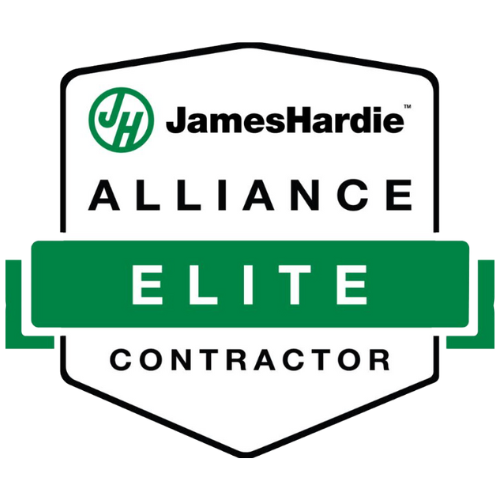Text or Call
Storm Damage Repair
Ice dams are masses of ice that form along the lower edge of your roofline. The burden of big blocks of ice thickly covering your roof eaves is significant, and the damage they cause is substantial. Ice dams can also form at the foot of roof valleys (where two roof sections meet at a right angle) because they fill with windblown snow.
Read on to discover the problem with ice dams, how they form, and practical ways to prevent them!
Hefty ice dams can weigh hundreds of pounds and compromise the structure of your roof eaves. In their most severe form, they can even cause a roof to cave in. They may look pretty, but they are a safety hazard to you, and they call for roof repairs.
Ice dams can cause heat loss in your home when melting ice water leaks into your house, lowering its R-value (ability to retain heat). They decrease your home’s insulation, meaning you’ll need to spend more money heating your house to keep it comfortable each winter.
Ice dams cause water to back up under your roof shingles, producing moisture intrusion. This trouble doesn’t just stay under your shingles. It flows down and can ruin your interior ceilings and walls too.
If left unaddressed, damage from ice dams can mean you need a roof replacement. They cause structural rot, mold and mildew damage, along with damage to your:
Ice dams form when snow melts, runs down your roof, and refreezes near your roof edge. When part of your roof warms to above freezing, the snow melts. If the roof edge remains below freezing, water will refreeze and form a dam. The culprit? Your warm attic.
Heat rises inside your home and escapes through your ceilings into your attic, where it warms the wood and shingles directly above the attic. So even if outdoor temperatures are below freezing, the snow melts over the warmed section of your roof. When melted snow runs down your roof, it encounters the cold edge of your roof eaves (which isn’t warmed by your attic). It then refreezes, creating a rim of ice. The rim grows, traps an increasing amount of water behind it, and suddenly—you have an ice dam on your roof.
With nowhere to go, trapped water backs up under your shingles, causing roof leaks as it drips through into your walls and ceilings. Look for:
After snow falls, a cold roof will have a thick blanket of snow on it. In contrast, a warm roof will soon have clear spots on it where snow has melted off. You may see icicles hanging from the roof eaves, and while they look pretty, they can cause damage. Keep your roof cold by dealing with areas of your attic that leak warm air into it from your home.
A third of the heat loss of most homes is through the ceiling into the attic. Air leaks are generally caused by gaps in drywall and cracks around your light fixtures and other ceiling penetrations (plumbing pipes, chimney). To stop air leaks, insulation in the attic needs to be raked back so leaks can be plugged using foam or caulk (contact a professional to do this). Stopping these air leaks will help lower your energy usage, saving you on utilities each year. And it will help you prevent damaging ice dams! Note: when your home becomes more airtight, check your appliances (water heater, furnace…) for back drafting to ensure they aren’t leaking carbon monoxide into your home.
If you have had trouble with ice dams in the past, increase your attic insulation. If you have less than eight inches of attic insulation, blown-in cellulose and fiberglass can fill in tightly around attic rafters, joists, and more. Hire a pro to do this job for you, and you’ll love the results.
Your attic’s ventilation is a vital ingredient to the health of your roof. Proper air circulation will extend your roof’s lifespan! Hire a reputable contractor (like us!) to add the appropriate amount of ventilation to your home so moist air doesn’t get trapped in your attic and contribute to the formation of damaging ice dams. Roof and soffit vents flush out warm air and bring cool air into your attic—protecting your roof from ice dam formation.
Thoroughly clean all leaves, sticks, and debris from your gutter system so water can flow into it and away from your home.
To help prevent ice dams in the future, have your roofing contractor install an ice and water barrier. This self-sealing underlayment adheres to your roof decking and waterproofs it. Your roofing shingles are installed on top of it. This isn’t something you can do to your current roof, but rather should be done when you replace it.
Now that you’ve learned how to prevent ice dams, you can avoid the costly hassle they create. And when your home is in need of a new roof, our experienced team at American Way Exteriors is here to serve you.
Learn more about how our roofing services can protect and add beauty to your Dayton home.
American Way Exteriors has earned numerous positive reviews for our outstanding service. Read about our customers’ pleasant experiences working with us, then contact us today to learn how we can improve your home with new siding and roofing.








